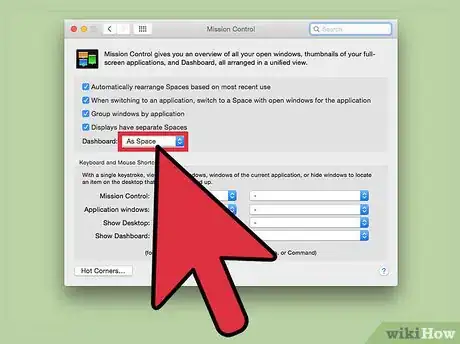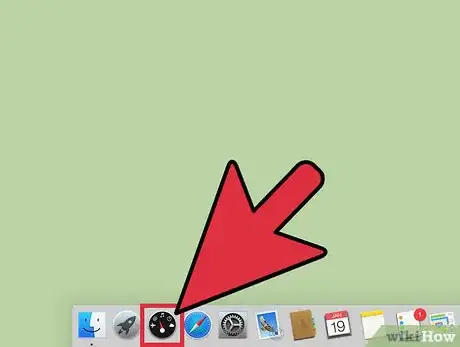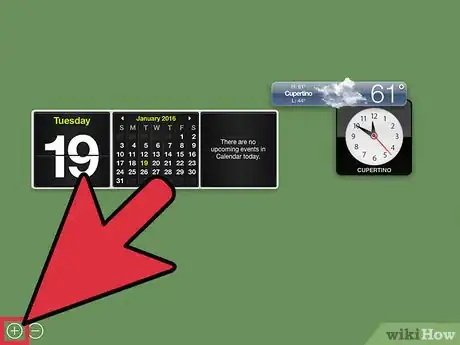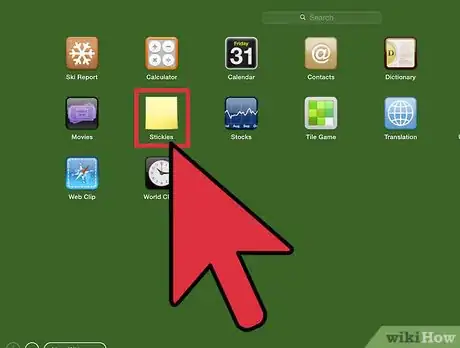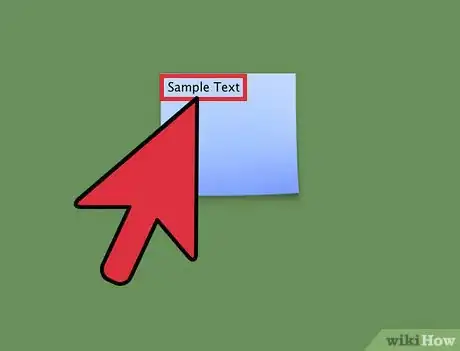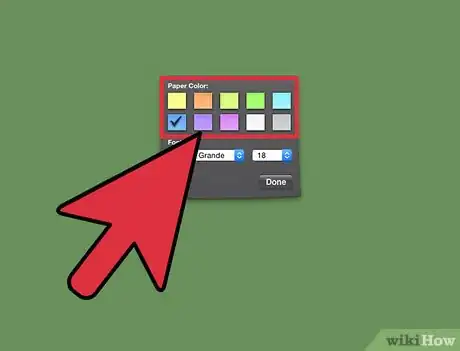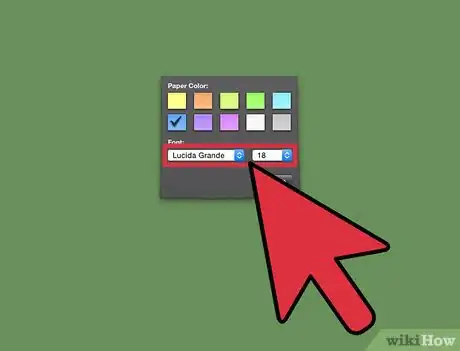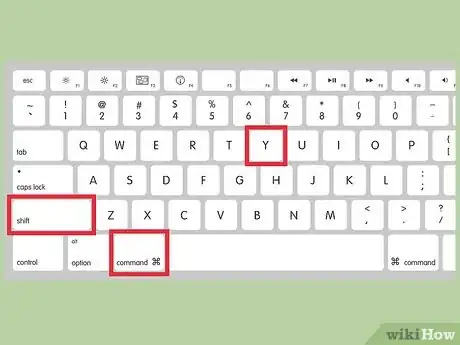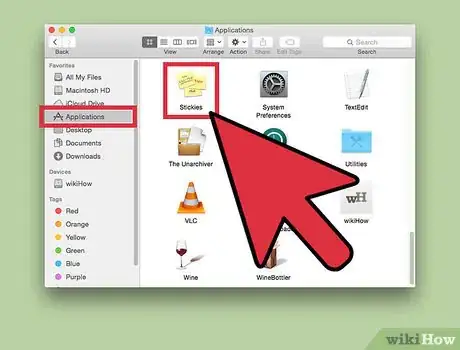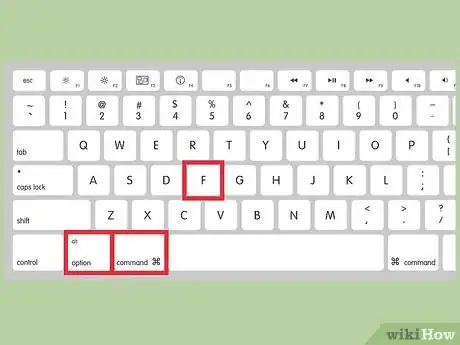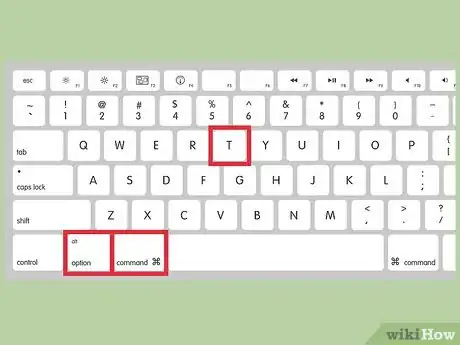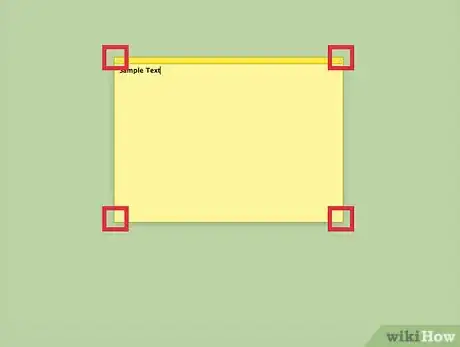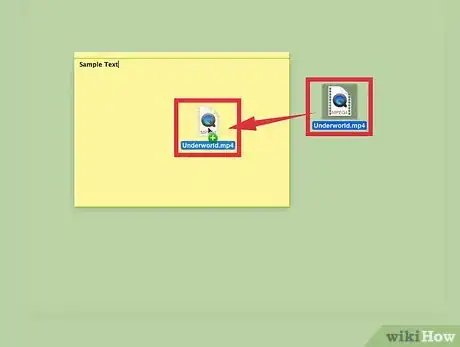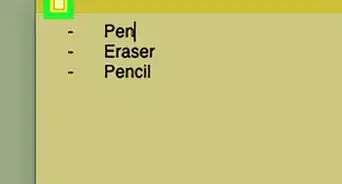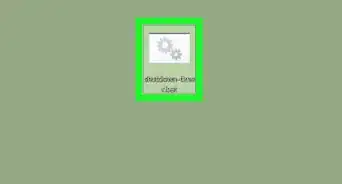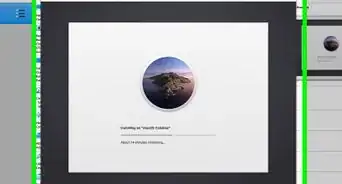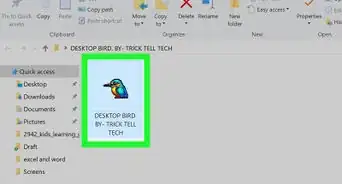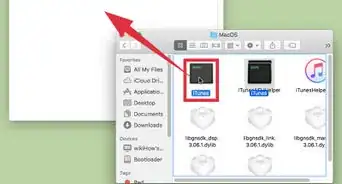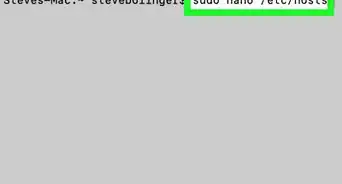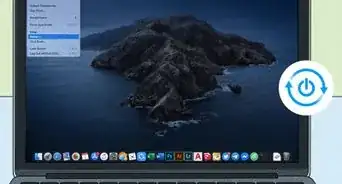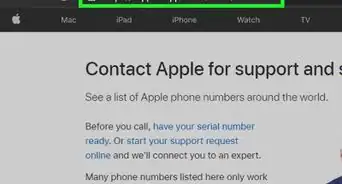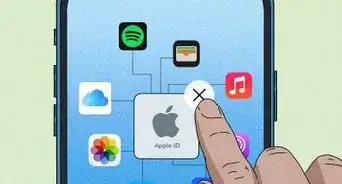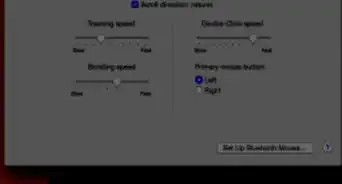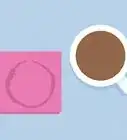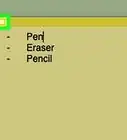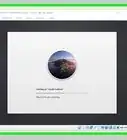This article was co-authored by wikiHow Staff. Our trained team of editors and researchers validate articles for accuracy and comprehensiveness. wikiHow's Content Management Team carefully monitors the work from our editorial staff to ensure that each article is backed by trusted research and meets our high quality standards.
This article has been viewed 269,409 times.
Learn more...
Adding a Sticky Note to your Mac's desktop makes it easy to find the notes you need, when you need them. We'll show you how to create desktop Sticky Notes, as well as how to add Sticky Notes to the Dashboard in older versions of macOS.
Steps
Creating a Dashboard Sticky Note
-
1Re-enable the Dashboard if you're using El Capitan (10.12). In El Capitan, the Dashboard has been disabled by default. This likely indicates that it will be retired soon, but you can still enable it for now and use the sticky note widget.[1]
- Click the Apple menu and select "System Preferences."
- Select "Mission Control" from the menu.
- Click the "Dashboard" menu and select "As Space" or "As Overlay," whichever you prefer. This will re-enable the Dashboard.
-
2Open the Dashboard. Once the Dashboard has been enabled, you can open it using your keyboard or trackpad.
- Swipe right with three fingers on your trackpad to open the Dashboard. This will only work if it is set to open as a Space.
- Press the Dashboard key on your keyboard. This will typically be F4, and the icon looks like six small squares arranged in two rows. Older keyboards may have an icon that looks like a speedometer.
- Press Fn+F12 on your keyboard. The Fn key is usually located in the bottom-left corner of the keyboard.
- You can also open the Dashboard from the Dock or Applications folder.
Advertisement -
3Click the "+" in the lower-left corner. This will open the New Widget menu.
-
4Select the "Stickies" option. This will create a new sticky note on the Dashboard.
- The Dashboard's sticky note widget is separate from the Sticky Notes desktop app. Dashboard notes are more limited in formatting and content options. See the next section for instructions on creating desktop sticky notes.
-
5Enter the note text. You can start typing in your new note immediately. Enter anything that you want to save in a quick note format.
-
6Change the note color. You can select from several different colors to help organize your notes.
- Click the i button in the bottom-left corner of the note.
- Select the "Paper Color" that you want to use for that note.
-
7Change note font. You can change the font of the note if you don't like the default one.
- Click the i button in the bottom-left corner of the note.
- Select the font and size from the menus that appear.
Creating a Desktop Sticky Note
-
1Press .⌘ Command+⇧ Shift+Y to create a sticky note from highlighted text. One of the most useful features of the Stickies desktop app is the ability to create a new sticky note from any highlighted text. This is great for creating a note from a website, email, calendar entry, or any other piece of text. This shortcut will create a new sticky note on your desktop from the text that you have selected. You can also select images and links, and these will be copied to the sticky note as well.[2]
- If this doesn't work, click the Apple menu and select System Preferences. Open the Keyboard section and click the Shortcuts tab. Select the Services category and then find "Make New Sticky Note." Check the box to enable this keyboard shortcut.[3]
- Note that desktop sticky notes are separate from the Dashboard sticky notes.
-
2Create a sticky note by opening the Stickies app. You don't have to use the keyboard shortcut to create sticky notes. Opening the Stickies app in your Applications folder will allow you to create new notes and adjust your sticky note properties.
-
3Press .⌘ Command+⌥ Option+F to make a sticky note float above other windows. With the sticky note highlighted, this shortcut will force the sticky note to stay in front of your other windows. You can also enable this from the Note menu.
-
4Press .⌘ Command+⌥ Option+T to make a sticky note translucent. This will let you see anything that is underneath the note, and is useful when used with the previous shortcut. You can also enable this from the Note menu.
-
5Resize a note by dragging the corner. You can resize desktop sticky notes to be any size. If the text in the note doesn't fit inside, you can use the arrow keys to scroll through it.
-
6Add movies and other media files to your sticky note. Sticky notes don't need to be just text. You can drag media files into the sticky note, and they will appear with playback controls. This includes video and audio files. You can also add PDF files to sticky notes.[4]
Community Q&A
-
QuestionHow can I leave a sticky note on my desktop?
 Community AnswerRun the Sticky Note app; it should be on your Launchpad. If you can't find it, search for it using the search option in your Start menu/screen.
Community AnswerRun the Sticky Note app; it should be on your Launchpad. If you can't find it, search for it using the search option in your Start menu/screen. -
QuestionWhere did my Dashboard go?
 Community AnswerEl Capitan has disabled the Dashboard by default. You can re-enable it in the "Mission Control" section of the System Preferences menu. Click the "Dashboard" menu and select "AS Space" or "As Overlay."
Community AnswerEl Capitan has disabled the Dashboard by default. You can re-enable it in the "Mission Control" section of the System Preferences menu. Click the "Dashboard" menu and select "AS Space" or "As Overlay." -
QuestionHow can I back up my sticky notes?
 Community AnswerHold the Option key and click the "Go" menu in Finder. Select "Library" from the menu. Copy "StickiesDatabase" to create a backup of your sticky notes.
Community AnswerHold the Option key and click the "Go" menu in Finder. Select "Library" from the menu. Copy "StickiesDatabase" to create a backup of your sticky notes.
References
- ↑ http://www.macrumors.com/2015/08/20/apple-disables-dashboard-default-osx-el-capitan/
- ↑ http://www.macobserver.com/tmo/article/how-to-exploit-the-stickies-app-in-os-x
- ↑ http://osxdaily.com/2010/01/07/instantly-create-a-stickies-note/
- ↑ http://www.macosxtips.co.uk/index_files/10-tips-for-stickies.php
About This Article
1. Open the Stickies app.
2. Type some text.
3. Resize the note by dragging the corners.
4. Click the "i" to customize the color.
5. Drag media to the note if desired.
